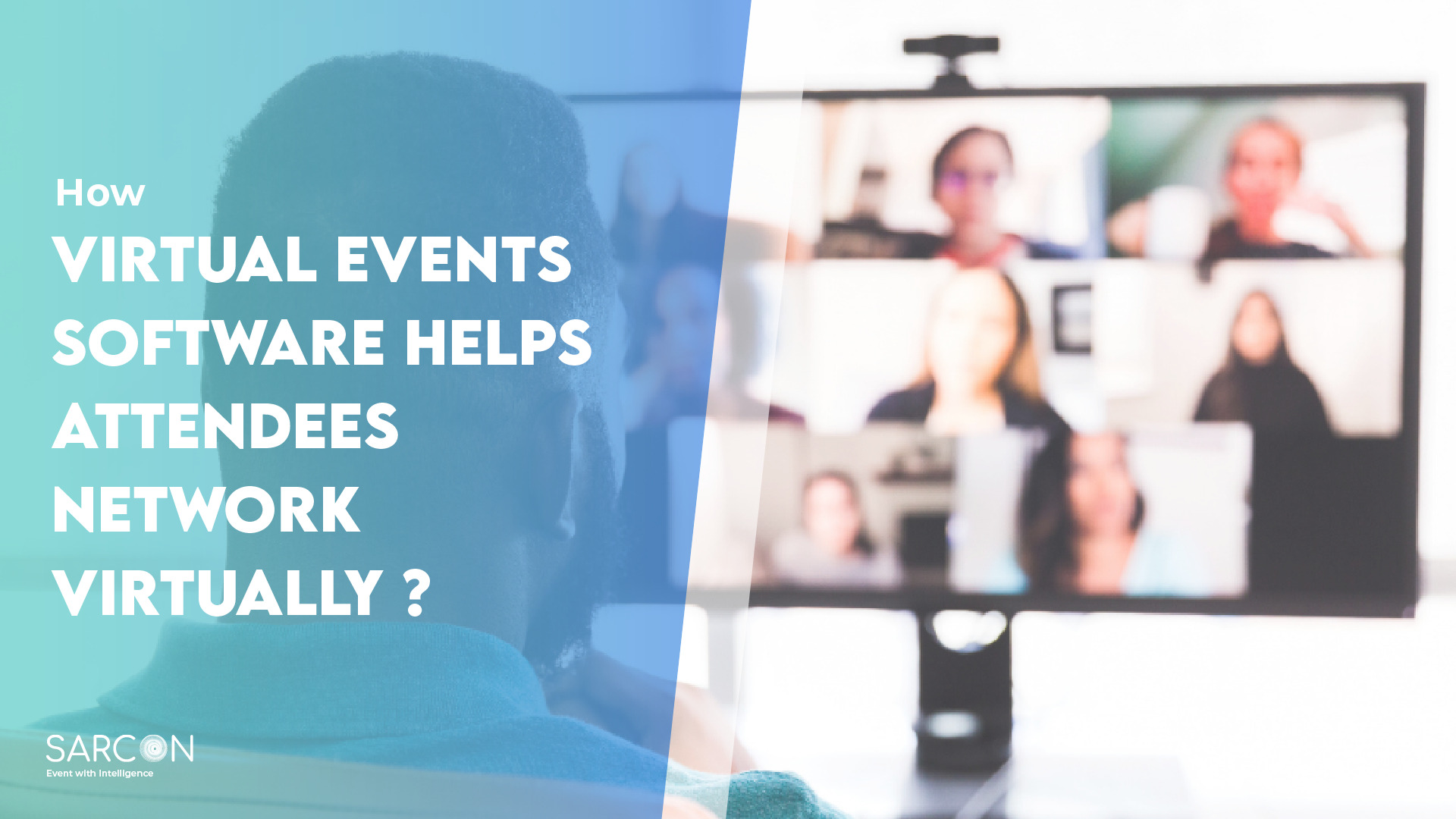Business relationships are key to success. No matter how talented your team or you may be, you’ll struggle to move forward if you don’t have the right connections in your industry. That’s why virtual events software is so important. In a digital setting, it facilitates communication with people from all over the world. This makes networking easier than ever before! In this blog, we will discuss the benefits of virtual networking events and how virtual event platforms can help you achieve your goals.
Why Is Networking So Important?
In today’s business world, networking is more important than ever. With the rise of social media and the popularity of virtual events, networking has become more accessible and important than ever before. According to Markletic Event Research, networking is the second most popular reason people join virtual events. It provides a great way to connect with potential customers, partners, and suppliers worldwide.
Furthermore, virtual networking provides opportunities that would otherwise be impossible. For example, let’s say you’re a small business owner who wants to connect with potential customers in other countries. Virtual events allow you to attend international conferences and meetups without spending a fortune on travel or taking time away from your business.
Virtual event networking also has some unique benefits you don’t get with in-person networking. For example, attendees can connect with more people in a shorter period. And because virtual events are often recorded, attendees can review the networking sessions later to ensure they didn’t miss anything important. Additionally, virtual networking events are often more intimate and allow you to connect with people in a deeper way than large, in-person events.
What is Virtual Events Software?
As the world becomes more digitized, so do many business meetings and conferences. While large in-person events may not be possible for every business, virtual events have become a popular choice to stay connected with clients, customers, and employees.
But what exactly is virtual events software?
Virtual event software is a type of conferencing and event platform that allows businesses to host virtual events in lieu of in-person gatherings. These platforms provide live streaming capabilities so attendees can view the event on multiple devices and networks through social media integration. The software can help you with various tasks, such as creating an event website, managing registrations, and sending out email invitations.
Some virtual event software platforms also offer additional features like on-demand content, virtual booths, and sponsorships to help businesses generate leads and revenue. It also helps businesses to connect with their target audiences at a global level.
So, if you’re considering using virtual event software for your next conference or meeting, check out Sarcon.
How Does Virtual Events Software Help In Networking?
Networking is critical for any successful event, and virtual events are no different. Virtual events software can help facilitate networking opportunities by enabling attendees to connect with one another before, during, and after the event. They are a great way to connect with people with similar interests.
One of the most important ways virtual events software can help with networking is by providing a platform for attendees to connect even before the event begins. This way, attendees can start getting to know each other and establish relationships that can be beneficial during and after the event.
Another way virtual events software helps with networking is by facilitating networking opportunities during the event itself. For example, virtual events software can provide a space for attendees to mingle and chat and offer features like virtual business card exchange that can make it easy for attendees to connect with one another.
Finally, virtual events software can also help with networking after the event has ended. Attendees can use the platform to stay in touch with each other and continue building relationships that started at the event. Additionally, virtual events software can provide a space for attendees to give feedback and connect with event organizers, which can benefit both parties.
Key Features Of A Virtual Events Software
When planning a virtual event, choosing software that will provide ample networking opportunities is important. After all, networking is one of the main reasons people attend virtual events!
Here are some important features to look for in virtual event software that will help facilitate networking:
Live streaming:
Choose a virtual event software that allows you to live stream your event to a global audience. You can use the platform to stream virtual “meet and greet” sessions with keynote speakers or other VIPs and have virtual break-out sessions focused on specific topics.
On-demand content
Virtual event software provides attendees access to on-demand content after the event. This includes recordings of all the sessions and any presentations and materials shared during the event. Attendees can watch, listen, and read the content at their own pace.
Social media integration:
Many virtual event software platforms offer social media integration, which allows you to connect with other attendees and share information about the event on your favourite social media channels. Connecting in this way can help you meet new people who could become valuable business contacts or partners.
Business directory:
Some virtual event software platforms include a business directory, which can be a valuable resource for networking. You may identify potential partners for your company with the help of this search function, which allows you to narrow down the results based on criteria such as industry, location, or keywords.
Business card:
Some virtual event software like Sarcon offers dedicated networking features, like virtual business cards, that allow you to connect with each other and exchange contact details.
Live Chat:
Look for software that offers interactive sessions, like Q&As, polls, and chat features. This will allow attendees to engage with each other and start meaningful conversations. Many virtual event software platforms offer group chat features, which can be a great way to network with other attendees. The group chat lets you join conversations about specific topics or interests and learn about attendees’ business goals and objectives. Additionally, attendees can use the platform to message each other, share photos and files, join discussion forums, and more.
Video conferencing:
Some virtual event software platforms offer video conferencing capabilities, which can be a valuable tool for networking. Video conferencing allows you to have face-to-face meetings with other attendees, which can help you build relationships and make connections.
Lead capture:
Many virtual event software platforms offer lead capture features, which can be a valuable tool for networking. Lead capture allows you to collect contact information for attendees interested in your product or service and help grow your business.
Mobile event app:
A mobile event app is a great virtual events platform feature that helps attendees stay connected on the go. Attendees can use the app to view the event schedule and receive notifications and updates.
Gamification:
Some virtual event software offers gamification features, like virtual scavenger hunts and virtual quizzes. These can be a great way to get attendees to interact and have fun!
Benefits of Hosting a Virtual Event With Sarcon
If you’re looking for virtual events software to help you take your event to the next level, Sarcon is the perfect solution.
Here are some of the benefits of hosting a virtual event with Sarcon:
Virtual event platforms like Sarcon provide several tools to make virtual networking safe and enjoyable. Virtual booths in Sarcon, for example, allow businesses to exhibit their goods and services to visitors in real-time. Exhibitors may be visited by attendees who can browse the booths and engage with them in real time. This is an excellent approach to reaching out to potential consumers and discovering new products and services. Sarcon also has virtual networking lounges where people can mingle and converse online. These lounges are ideal for connecting with new individuals and building relationships.
Furthermore, Sarcon’s virtual events software is designed to make networking easy and efficient. You can connect with other professionals within your industry, learn about new products and services, and build relationships through the mobile app itself. Sarcon’s virtual events are affordable and convenient – perfect for busy professionals who want to get the most out of their networking opportunities.
Leave an Impression
Virtual events have many advantages, but that doesn’t mean they don’t come with their own challenges. You can’t simply rely on software to do all the heavy lifting. Sure, it’s easy to network when you’re face-to-face with someone. But what about when a computer screen separates you? How do you make a lasting impression and build meaningful relationships when you’re not in the same room?
The whole point of attending an event is to come away feeling like you’ve made valuable business connections, right? A great way to ensure that happens is by participating in networking activities at the event.
Here are a few tips to help you master virtual event networking:
1. Be prepared.
Before the event even begins, take some time to research who will be attending. Look at their profiles and see what you have in common. This will give you a starting point for conversation and help you break the ice.
2. Make the most of chat features.
Most virtual events will have some chat feature that you can use to communicate with other attendees. Use this to your advantage! Don’t be afraid to strike up a conversation with someone new.
3. Dress to impress.
Just because you’re not meeting in person doesn’t mean you shouldn’t dress your best. First impressions still count, even when they’re virtual. So make sure you look presentable and put-together – it’ll help you feel more confident and make a good impression.
4. Follow up.
Once the event is over, don’t forget to follow up with the people you’ve met. Send them a LinkedIn request or an email – anything to keep the conversation going. And who knows, you might find yourself with a new business connection!
Conclusion
While technology has enabled us to interact with people worldwide in unimaginable ways, virtual gatherings have taken this a step further by connecting us with individuals online. Networking isn’t just limited to physical events and handshakes; they offer a much more versatile way of socializing.



